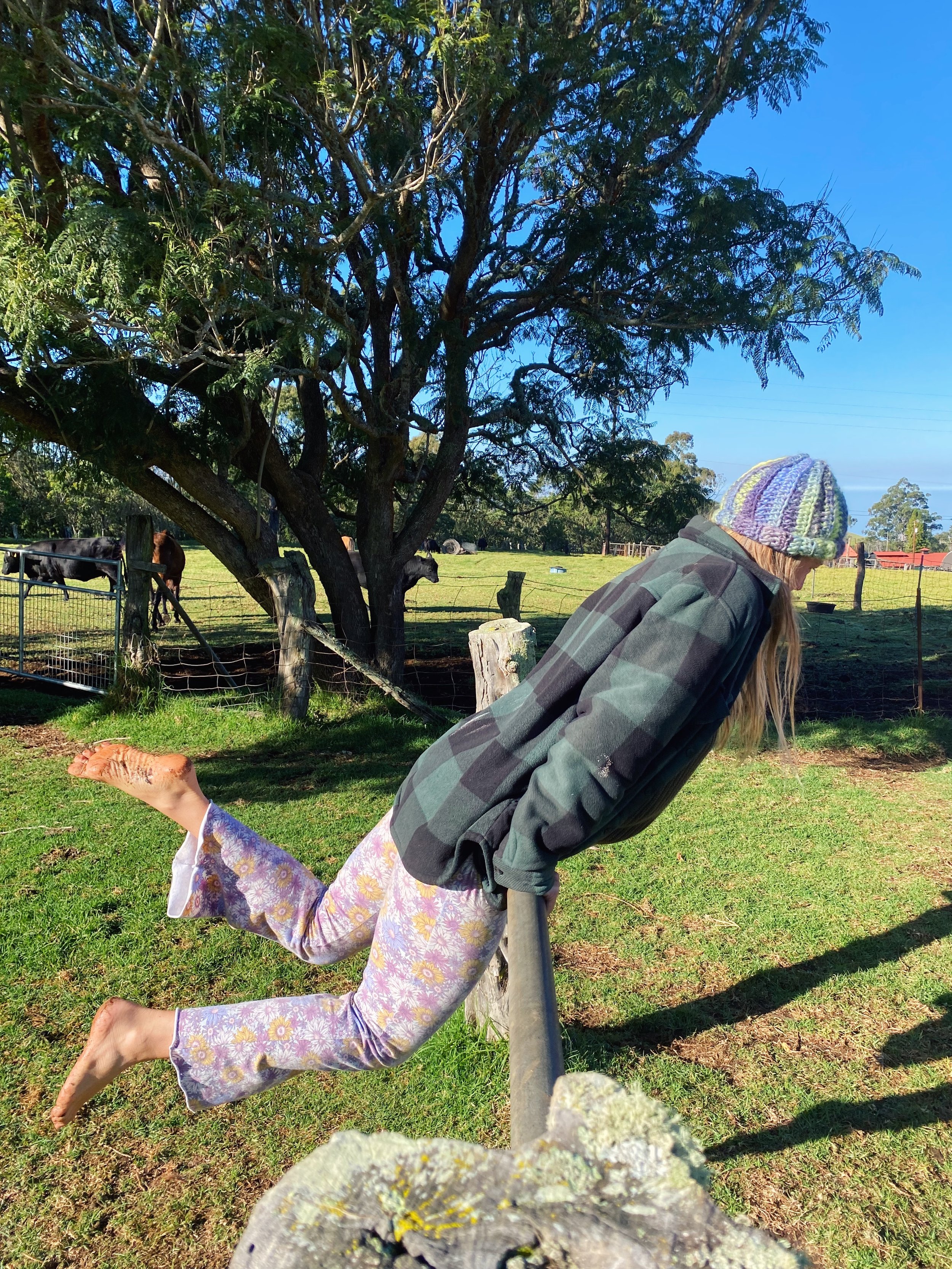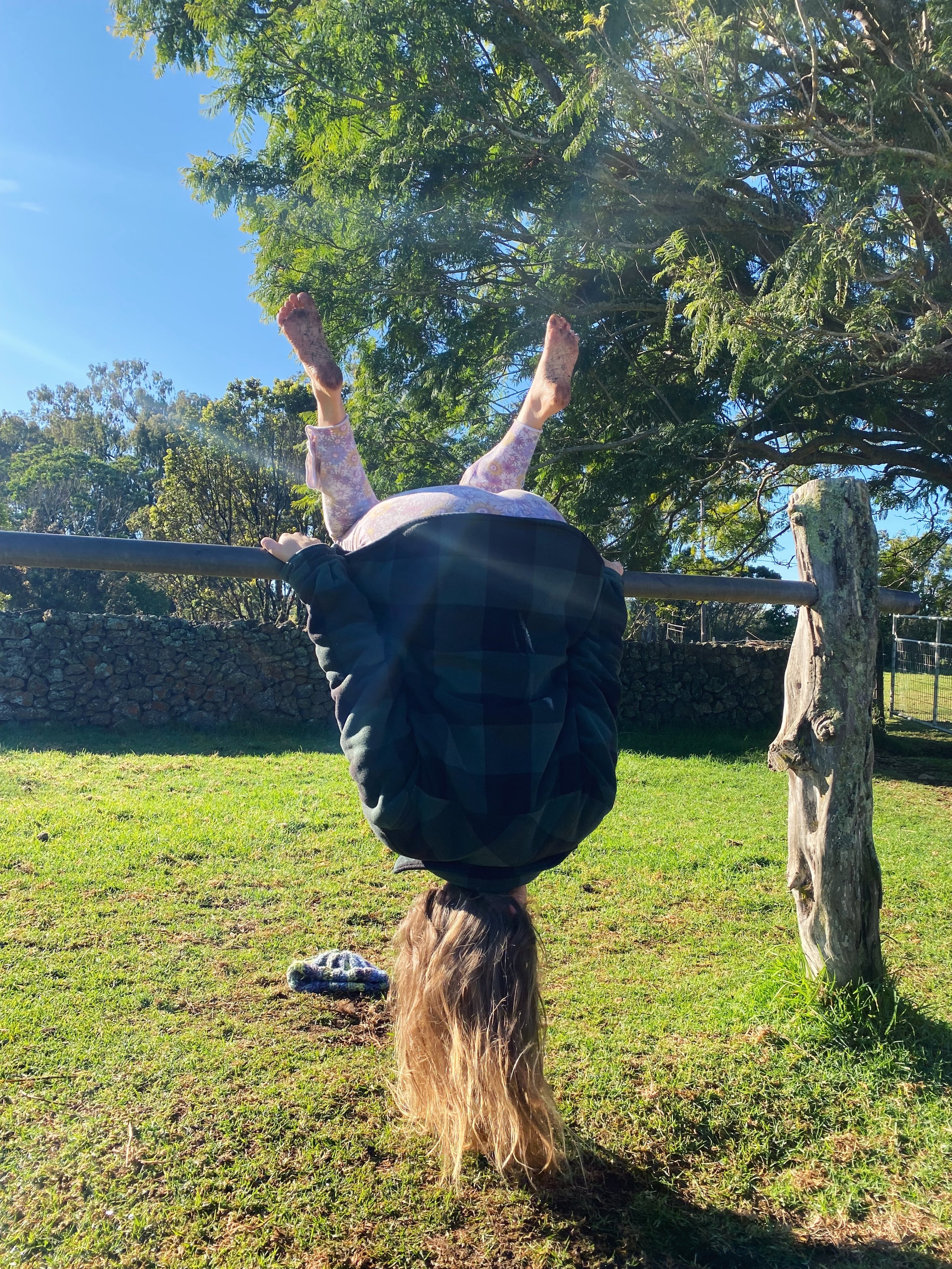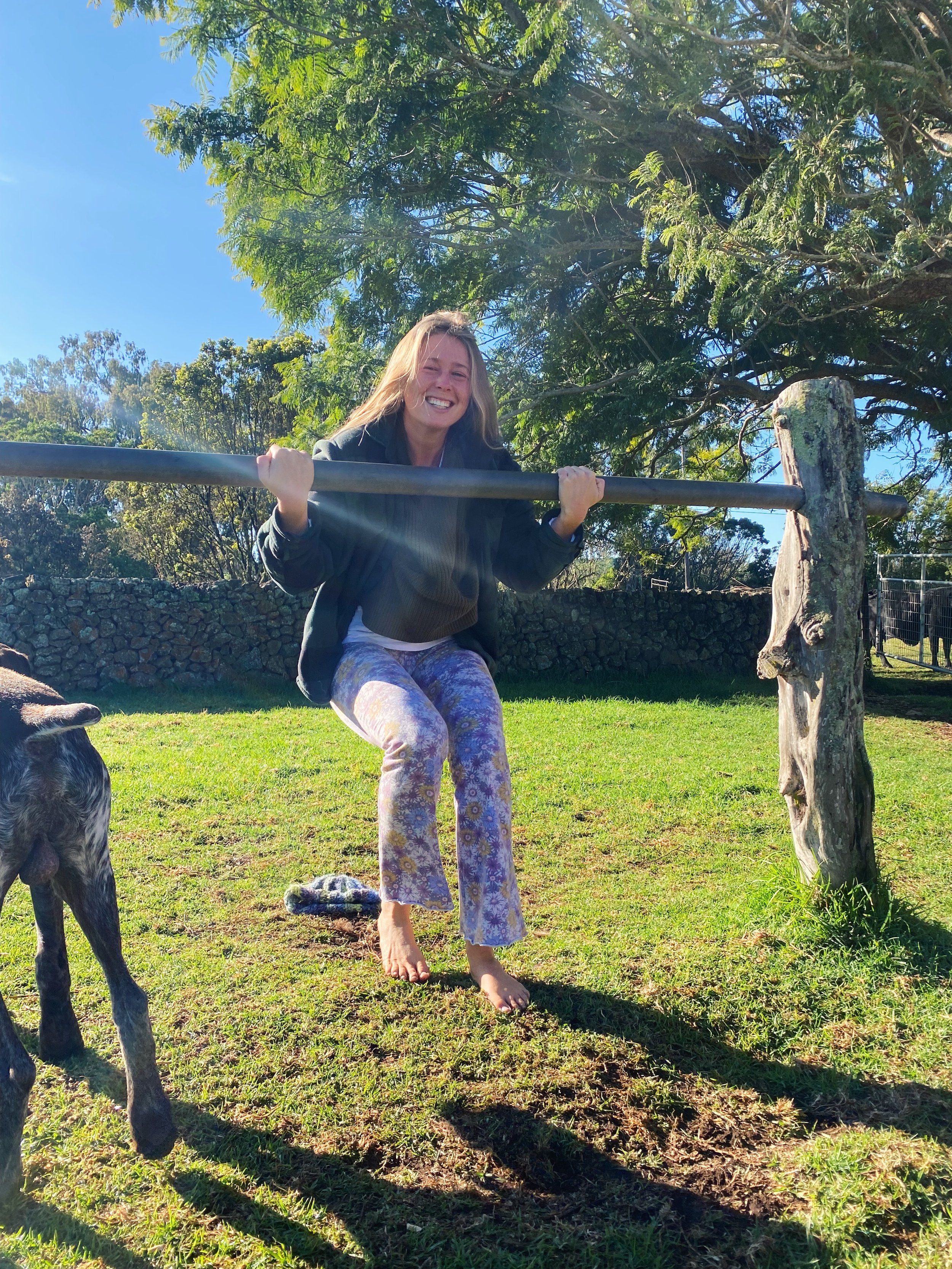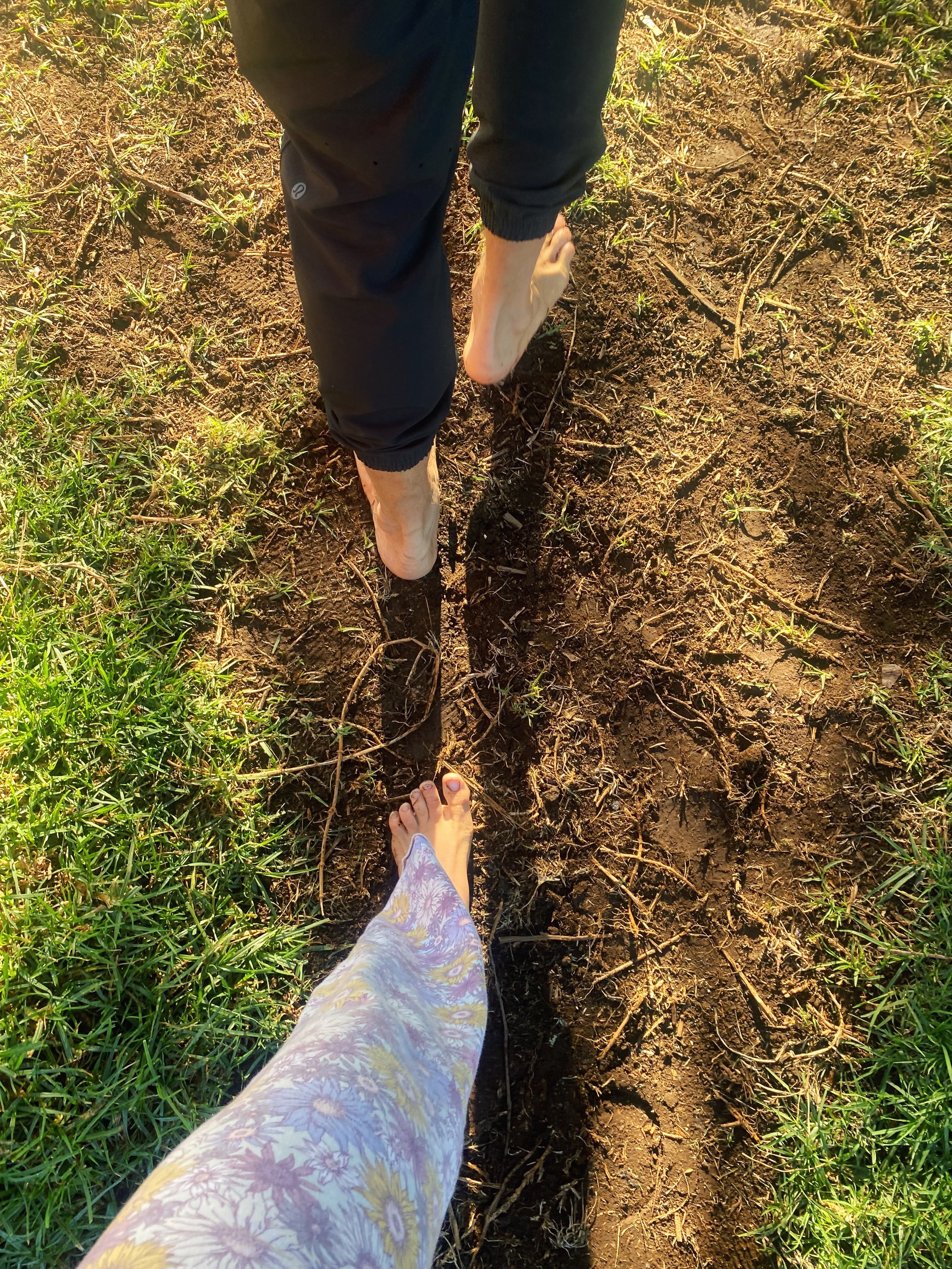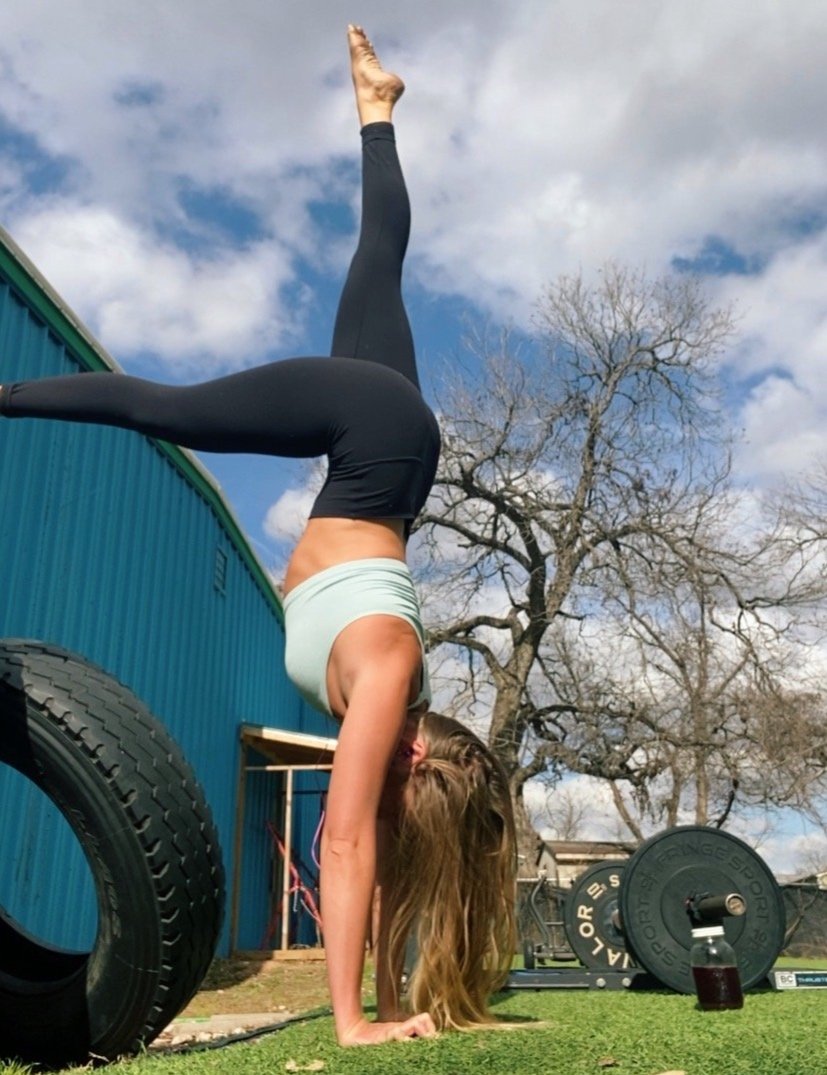Exercising to Honour the Menstrual Cycle
A Quick Note On Hormonal Birth Control
This article does not apply to women on hormonal birth control (HBC). HBC is chemical castration: it shuts down ovulation, and the bleed you get while on the sugar pill part of the pill (for example) is actually a ‘fake’ bleed that was introduced as a marketing tactic to make the pill feel more normal/ healthy.
If you are on HBC, you miss out on all the absolutely wondrous monthly fluctuations that occur in the female body, and the honest-to-god superpowers the come with tapping into these cycles. One such superpower is the ability to attract a mate that is compatible with you on a primal level. We are attracted to the scent of our mates, and this ability is stifled while on HBC. Many women come off the pill and are replaced by their mate, don’t risk it. Not to mention the fact that HBC suppresses any hormonal imbalances or problems, letting them flood back (often worse) once you come off of it.
When doctors prescribe the pill or another form of HBC to ‘regulate’ a period, your bullshit-o-meter should go off. HBC does not regulate anything, it suppresses your hormones to menopausal levels. If you’re on HBC I highly suggest investigating the side effects and long-term implications. You can learn more about this the links below:
EXERCISING TO HONOUR THE MENSTRUAL CYCLE
I have been training in the gym for over a decade, but only in the past 3ish years have I slowly started honoring the fact that women and men have different needs when it comes to hormonal fluctuations throughout the month. It was at age 25 (I’m now 29 as I write this) that I learned about the phases of the menstrual cycle and started charting my cycle. Twenty-five! No one had ever told me that there was more to my period than just bleeding— to be honest I thought that was it: you bleed for 3-7 days, and the rest of the month is just blood-free.
Today, I have learnt to balance out the pressures of society’s structure and the way I was raised to include my awareness and knowledge of the needs that women’s bodies have. It’s not always perfect, but by having the knowledge about the 4 phases of the menstrual cycle I have been able to tailor my exercise program and integrate this awareness in my day to day life as well. There are periods of our cycle that come with more energy and clarity, while others require more stillness. The beauty is that when you learn to honour your body in this way, all 4 phases are pain-free, and divine. You learn to harness the beauty of each phase, and can schedule your life to work with you body, not fight against it. Today we will explore mostly the ways in which you can tailor your exercise regimen to your cycle, but inevitably will touch on other aspects of lifestyle too.
Before getting into it, I think it’s important to understand the ways in which society is shaped, and the ways in which it pushes women against their natural, cyclical nature. We live in a masculine-dominated world, and this has nothing to do with men vs. women; it’s about the yang masculine energy that permeates the way we operate. Both men and women have masculine and feminine energies within them, and when we find this balance in our inner world, it reflects in the outer world, too. My hopes are that by bringing awareness to our feminine cyclical needs, and by learning to honour them, that we can start standing up for the yin, feminine nature that lacks in our society.
LEANING INTO THE MASCULINE
Having discovered tampons at a fairly young age, I didn’t even consider the period itself to be any degree of a burden. I swam, ran, lifted weights, whether I was bleeding or not. This came from a seemingly empowered place, the whole “I can do anything you do bleeding” mentality. We see it pushed in TV commercials and menstrual product ads all the time, the idea that women don’t need to stop just because they bleed.
The problem with this mentality is that it simply isn’t true. Women have different needs than men. They aren’t better or worse, they’re simply different. Although there are times of the month when our head isn’t as clear, or our bodies need more rest, we more than makeup for it with enhanced energy during other periods of the month, heightened creativity, intuition, and various other abilities, the problem is the way that our society is structured. The more we learn to work with our hormones, the more we thrive in each individual phase.
The typical 9-5 jobs are structured according to the masculine energy (and hormonal) cycle. This masculine, linear way of living permeates our society and often forces women to tap into their adrenals instead of honoring their need for rest. It’s no wonder adrenal fatigue affects women more than men.
In a perfect world, society would be structured to honor the needs of women, the way it used to in the past. Once upon a time, women had tents, that they would go stay in for the week of their menstrual cycle. They would be cared for, they would rest. By honoring the need for rest during their cycle women could step up and show up in their full power the rest of the month— giving and holding space for the community in ways only the feminine can.
As we have lost this ancestral wisdom, we have done so at the expense of our bodies, minds, and souls. We push ourselves to the limit to keep up with the boys when the reality is there’s no competition between men and women. We are playing two different games, and by trying to keep up with their mode of operating, we are driving ourselves into the ground.
Various tampon ads promoting dissociation from the body’s natural desire to rest during menstruation.
FEMALE PHYSIOLOGY AND WOMEN’S NEEDS
As I was deadlifting in the gym today, I realized how few women are even aware of the fact that men and women operate on this different hormonal wave. I assumed most didn’t since it’s really not something commonly taught as we go through puberty. Understanding the differences between men and women can be done most easily by examining the physiology, and the ways our bodies operate hormonally for reproduction.
Men’s contribution to reproduction can essentially be summarised by sperm. Huge contribution, but it is one linear aspect of conception that they must always be prepared for. If you’ve ever known a man in the prime of his reproductive years, you’ll know that he’s always ready, and fully loaded. That’s the divine male energy: always ready. It’s that primal male energy that hunts, provides, protects.
Women’s hormones, on the other hand, are more of a symphony. This orchestra is directed by the pituitary gland, and as our estrogen and progesterone rise and fall (plus about a bajillion other things happening simultaneously) in divine timing: we ovulate and we menstruate.
Ovulation is the releasing of the egg(s), which enable conception (provided there is sperm present). Ovulation is what gives rise to menstruation if there is no sperm present. This hormonal rollercoaster means that every single day of your cycle is different than the last, as the hormones required to make it all happen are always in flux.
Ovulation is actually delayed if the body is experiencing too much stress because the body intelligently thinks “this isn’t the time to bring a child into the world”. Delayed ovulation means menstruation is also delayed (you can only have a true menstrual bleed following ovulation). Knowing this, you can then realize that there is no such thing as a “late period”, only delayed ovulation.
An important thing to note here is that there is a two way street between you and your hormones. They influence the way you feel/ act/ think, and vice versa your lifestyle influences your hormones. Stress, for example, is one major player in the way that your lifestyle influences your hormones.
STRESS AND YOUR HORMONES
Like we’ve noted (with delayed ovulation) stress plays a major role in changing your hormonal response. Stress can be chemical, emotional, or physical— and although we are a super resilient human being, your body can only take so much before it starts adapting to the stressful environment. This adaptation is a survival mechanism; it will keep you alive, but if you have any interest in THRIVING, you better become very in tune with your body and mitigate stress as much as possible.
One of the best things you can do to combat stress: spend time in nature. Make time everyday to be barefoot in the earth, ideally with bare skin exposed to the sunshine. Bonus points if you can play, watch the sunrise or the sunset to optimise your circadian health and promote a deeper sleep.
COMMON TYPES OF STRESS
Before moving forward, let’s just highlight some of the most common stressors that women experience in the day-to-day. Since the body doesn’t distinguish between the three types of stress, realize that your stressful job compounds the toxic body care, which compounds with the city air pollution, which compounds with the radiation from your cell phone. So although exercise is undoubtedly a healthy habit, it can actually end up being the kind of (physical) stress that ends up sending you into an autoimmune condition or hormonal imbalance.
CHEMICAL STRESS
Toxic body care products
Toxic cleaning products
Air fresheners
Conventional perfume
Herbicides
Pesticides
GMOs
Hybridized food (like modern wheat)
Air pollution
Mercury (amalgam) fillings
Mold exposure
EMOTIONAL STRESS
Toxic relationships
Stressful job
Death of a loved one
Being someone who worries a lot
Watching the news all the time
Having unresolved childhood or transgenerational trauma
PHYSICAL STRESS
Exercise
Physically demanding job
Sitting all-day
Standing all-day
Looking down at your cellphone all the time
Staring into a screen for hours a day
Having structural imbalances
Having limited mobility or strength
EMF exposure (wifi, cellphone, microwaves, dirty electricity)
EXERCISE AND HONOURING YOUR MENSTRUAL CYCLE
Although you can technically ‘optimize’ your lifestyle to honor each phase of your cycle, the purpose of this article was initially to highlight the ways in which women can honor their menstrual cycle in relation to their exercise habits. I felt like I needed to preface it with all the information above, but let’s dive in specifically to the main topic now.
Exercise is (…can be…) an incredibly healthy habit, but like other masculine linear ways of living— women have fallen into the trap of doing the same thing all month, with no regard for their hormonal needs as women. This really hit me now that I’m training with a personal trainer, because my lifting program is on an 8-week rotation, with no mention or regard for that one week per month when women should be resting.
The more I thought about it, the more I realized that all our exercise and fitness industry is rooted in the masculine. Our gym memberships are charged on a monthly/ yearly basis, the fitness challenges run at gyms and fitness centers don’t take into account women’s cyclical needs either.
It’s clear that if you want your hormonal needs honored, the charge has got to be led by you. And so here I am to help you better understand what they are, and give you tips to harness the most out of your hormones as they fluctuate throughout the month.
THE 4 PHASES OF THE MENSTRUAL CYCLE
A wheel of the 4 phases, and some ways to honour the differing cycles.
Image: My MoonTime.
First things first: These 4 phases are not divided into the 4 weeks of the month. Although your menstrual phase and luteal phase (the ‘technically’ first and last phases of your cycle) are pretty much set in terms of days, those days are based on your rhythms. Women menstruate between 3-9 days, and the luteal phase also ranges. A healthy luteal phase is 10-14 days but it can be significantly shorter or longer depending on the woman.
The key to honoring each phase is knowing which phase you are in, and knowing this information becomes very simple once you start charting your menstrual cycle.
Resources below to delve deeper:
Ok, now that you know more about the phases and determining them through charting, let’s explore how to honor each one. I’ll also give you a mini synopsis on the phase itself in case you can’t be bothered charting your cycle (although seriously, you should).
MENSTRUAL PHASE
Technically, the menstrual phase is the last phase of your cycle, it’s triggered by ovulation and so it comes “after”, but it’s such an important phase because it sets you up energetically for the following month. So for this reason, I’m putting it first.
This phase is hard to miss: it’s your bleeding phase. During menstruation, the body thrives on rest. Although we’ve been primed by ad companies and CEO’s to think that we can do anything while we bleed, the reality is that we deplete our Jing (life force energy) when we try to “power through” with life as regular while we bleed.
In traditional Chinese medicine, there is so much wisdom that highlights the need to tone it down energetically, to preserve this life force. Many of the suggestions here are rooted in TCM.
THINGS TO AVOID DURING MENSTRUATION (PARTICULARLY THE FIRST 3 DAYS):
Cold water, and water in general. In TCM, all water is ‘yin’ or cooling, even when it’s warm water. Avoid getting water on the top of your head (even if it’s warm) on day 1 of your cycle. Taking warm baths can be OK, but avoid wetting your head on day 1, and avoid cold showers or bodies of water all together while you bleed.
Cold plunging in a Vancouver lake, end of November. A fantastic ritual for health, but not while bleeding!
Cold foods (‘yin’ foods), and raw foods. Understanding yin/ yang foods is an art, but as a general rule of thumb try avoiding cold foods (or liquids! no ice water. keep it room temp or higher), or raw foods. To delve a bit deeper read this article.
Lifting heavy weights: your energy is being diverted from the womb/ your bleed if you exert yourself too hard in the gym and cause muscle break down
Any type of exercise that would prevent having a conversation (for example, sprints are a no go, but going for a long gentle walk is OK)
Inversions (handstands, bridges, etc): any reputable yoga teacher highlights the fact that women should avoid inversions while they bleed. It goes against the natural flow of life
Fasting: you definitely want to avoid prolonged water fasting while you bleed, but sometimes even intermittent fasting can lead to amenorrhea or delay ovulation. Listen to your needs while you bleed, and ditch any hardcore OMAD or even too restricted a feeding window. For most women I would say a 12 hour daily fasting window might still do, but avoid anything bigger than that. The body already burns significantly more calories while you bleed, so focus on nourishing. If anything, the key to metabolic flexibility is diet variation, so take advantage of this week and amp up the caloric intake (and also the carbs if you’re generally leaning into keto)
Caffeine/ sugar: these artificial stimulants give you a false sense of energy, and will trick you into doing more than you should during your period. Honour your true energy levels! If this means taking a nap, do it! Sleep in, go to bed early, rest.
If you ditch the caffeine and are still energized enough to power through a workout (I do suggest not doing it on days 1-3 but anyways, I personally know the urge and don’t always obey my own rule..), if you do exercise, avoid fasting pre or post workout. There can be benefits to fasting mindfully pre- cardio or post- weight training, but avoid any type of fasted training while you’re bleeding.
Alcohol: like stimulants, this artificial depressant (and poison) will lead to reduced sleep quality and increase dehydration. Avoid while menstruating
Too much socializing: although we can’t always control this one, try to avoid too many social commitments while you bleed. We are more sensitive to other people’s energy at this time, and taking the opportunity to go inwards and enjoy quiet solo time is going to help reduce the fight-or-flight stress response. Take the opportunity to flex your boundaries muscle and learn to say no, or bail on plans if your body needs some time alone.
I love inversions during my follicular phase, but always skip them during my bleed!
THINGS TO DO WHILE YOU MENSTRUATE:
Stick to gentle, restorative types of movement while you bleed. This could be a gentle walk, stretching, time in nature, a restorative yoga class, or some time in the sauna.
Amp up the self-care: don’t feel guilty for taking time off. By honouring your need to slow down during your period, you set your body up for success for the next 3+ weeks. Focus on caring for yourself and really listening to your body’s needs.
This is the time for a massage, acupuncture, or any other type of restorative healing modality you can think of.
Stay warm: wear socks to bed, even in the summer. Avoid getting cold while you menstruate, it puts an immense amount of pressure on the body and diverts the energy from your womb.
FOLLICULAR PHASE
After you finish bleeding, welcome to the follicular phase. This phase is marked by rising estrogen, which means lots and lots of energy. As your body gears up to ovulate, you will not only feel energized, but generally this phase is also marked by really feelin’ yourself. This is when the body is looking for a mate, it’s when your libido will be on the rise (if you’re not facing adrenal fatigue).
There isn’t much you shouldn’t do while you’re in the follicular phase, this is your time to shine. This is the time to go on dates, go dancing with your friends, plan a dinner party at your house, rip the gym, train for the marathon, hike mount Everest, and take all the ice baths you want.
During the follicular phase we feel social, sexy, and energised beyond belief. This is, of course, only really a thing when your hormones are working properly. If you find your post-mensuration mood low and libido-less, it’s a big warning sign that your hormones need some attention. A good place to start is honouring your need for rest and recovery during the luteal and menstrual phases of your cycle.
OVULATORY PHASE
This is less of a phase and more of an event. You ovulate one day per cycle. For some women, the day following ovulation can leave them feeling very flat, and even depressed. Personally, I don’t have too drastic of a shift, but generally, I can absolutely feel my energy levels drop off. If you chart your cycle, you will be able to notice a temperature spike following ovulation, which you can confirm (ovulation) after 3 days of these sustained high temperatures.
Ovulation is like the peak of this energy you’ve been building over the follicular phase!
LUTEAL PHASE
The luteal phase is the period of time between ovulation and menstruation, when progesterone is on the rise. This is the period when women generally experience “PMS”, which BTW is a symptom of an hormonal imbalance and isn’t “normal” or healthy.
Your menstrual cycle is like a report card, and every month you get to check in to see how your hormones are doing. If you experience serious PMS (mood swings, pain, irritability, acne, cravings, etc), you’ve just been gifted the information that something you’ve been up to is not serving your hormonal balance.
The luteal phase is a great time to check-in with yourself, and start to slow it down. This is an ideal time for massage, acupuncture, or a yoni steam. Focus on warm nourishing foods, and shift gears into introspection and time alone.
The luteal phase is about slowing down, taking care. Pencil in some body work, or self-massage. This is the time I also like to get my home in order so I can fully rest during my bleed: laundry, deep clean, wash the sheets, do all those little things to ensure that your menstrual phase can feel as relaxed as possible.
For me, the luteal phase is also a nesting time. It’s when I’m called to clean my space, organise the drawers, do the laundry. It’s time to organise my home, and prepare it for a restful menstrual time. Take advantage of this time to make space for you to be able to take a few quiet days when you menstruate. What can you do during the luteal phase to ease your burden while you bleed? Maybe this is the time to catch up with that friend or complete a work project so that you can really slow down for a few days once you start menstruating.
SOME OF THE KEY THINGS YOU CAN DO TO PREVENT PMS/ PROMOTE HORMONAL HEALTH
…FOR SUSTAINED RESULTS, THESE HABITS HAVE TO BE DONE AS A LIFESTYLE, DAY IN AND DAY OUT:
Cut out processed foods (especially sugar, vegetable and seed oils, and flours)
Stay hydrated
Stop drinking tap water (drink only pure, properly filtered water or spring water)
Eat organic, whole foods and an abundance of pasture-raised animal fat/ meat (try to incorporate organ meat, too)
Get lots of sunlight, try to watch the sunset and sunrise and spend time in the sun daily without sunscreen
Stop using all toxic body care products and household cleaning products
Optimize your sleep quality (not only quality); learn how by reading THIS article
Minimize caffeine consumption (it props up unsustainable lifestyle habits)
Get to bed at the same time every night, preferably not long after the sun goes down and wake up at the same time too (ideally without an alarm)
Have a regular exercise routine that honours your cycle (rest during periods that require more rest)
End toxic and/ or co-dependent relationships (this is massive, I can’t tell you how many women tell the story of how their PMS went away after they broke up with a toxic partner)
Avoid alcohol
BIOINDIVIDUALITY AND GUILT
Don’t use any of this information to feel guilty or ashamed of your current lifestyle. Information can be empowering when used appropriately, but it can be harmful if we use it to feel bad about ourselves. We are bio-individual creatures that need an individualized approach to health. If you feel super-charged with natural energy during your menstrual cycle, sweet as! Somebody else’s words shouldn’t overpower your own divine intuition.
Use this information (and all information) as suggestions, and cross-reference them with how you actually feel. If life is working for you, keep rocking’. But get real with your habits and if they are serving you or not. We can withstand a lot, but many people are depositing cheques that their body cannot cash. Are you over-training at the expense of your adrenals and hormone health in the future? Only you know how your habits influence your body short/ long term. Question your intentions, question your relationship with your habits.
Sometimes I’m hyper-energised during my cycle, or have plans that involve activity. That’s ok! Try and stay warm, and opt for activities that aren’t too intense, and surrender to the flow of life. Being mindful of your cycle enables you to make empowered decisions, but it shouldn’t rule your life or bring on added stress.
EXERCISE FROM A PLACE OF SELF-LOVE
It’s really less about what you do, and more about why you do it. Women have been targets of body shaming and guilt for so long that we often eat and exercise to punish our bodies. What relationship do you have with your habits? Exercise can be healthy if it comes from a place of gratitude for able bodies, as a gift we give these amazing human bodies. When we exercise because we hate our shape or feel guilty for eating: this is toxic and detrimental to wellbeing.
Make sure that you check-in with your intention when it comes to movement, and see how this works in with your drive to ‘go-go-go’ during all phases of your cycle. So often we punish ourselves and push beyond our bodies desire simply because we feel unworthy. The more you tap into true self-love and acceptance, the more you can surrender to the feminine cycles. As we take into account our feminine need for periods of rest, we unlock our full potential to look good and feel good physically and emotionally.
SUMMARY
The female body is a symphony of hormones, that cycle throughout each menstrual cycle. Unlike the linear masculine hormonal nature, women’s needs are cyclical and require a tailored approach if you want to thrive. Although our society is structured in a very masculine way, there are still many ways you can lean into your feminine and support your body’s needs. One such way is to tailor your exercise routine to reflect the phase of your menstrual cycle. By honouring luteal and menstrual phases with more introspection, warmth, and rest, you can ensure that your follicular and ovulatory phases are optimized for heightened energy and clarity. By honouring your body’s needs in each phase, you promote a PMS-free menstrual experience (yes, it’s possible).
Stop fighting your body’s true nature. By working with it, you will truly be able to harness the divine power of the feminine. Understandably, life is imperfect. But tune in and bring a degree of awareness to your cyclical nature. When possible, honour it. Surrender to the things you cannot control, but set yourself up for as much success as possible by charting your menstrual cycle and scheduling accordingly. The more we step into our power as women and start to honour our bodies, the more society will be forced to adapt to the feminine.



